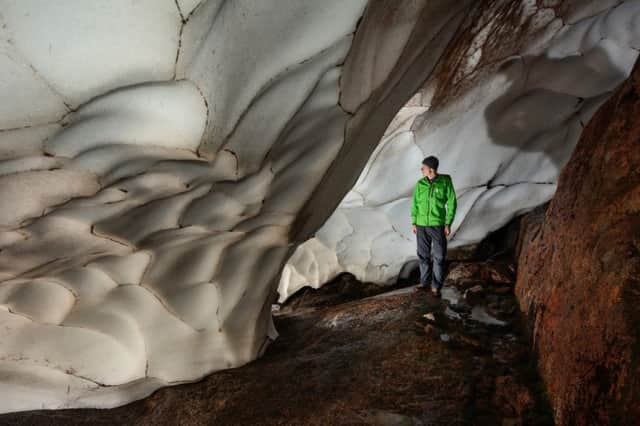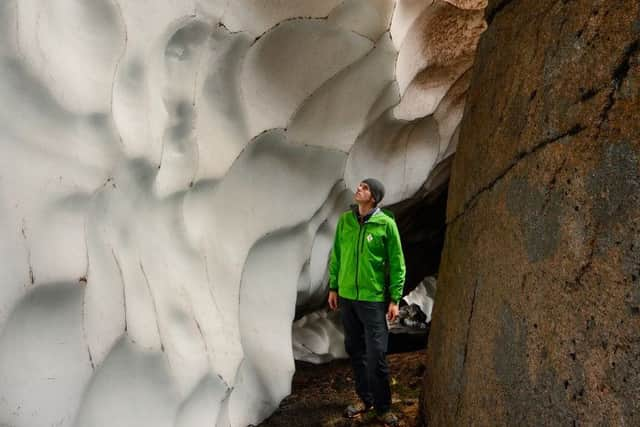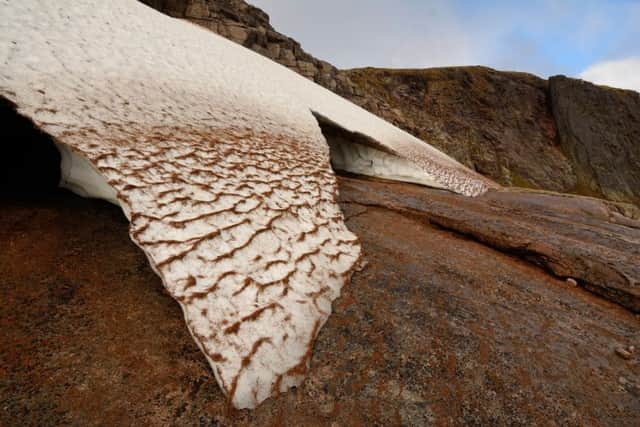Capturing the natural phenomenon of Cairngorm’s snow tunnels


Photographer James Roddie is based in the Scottish Highlands and spends his days exploring the country’s beautiful nooks and crannies, seeking out wildlife with his camera close at hand.
Recently Roddie photographed himself inside the richly textured snow tunnels found in the Cairngorms area, capturing this astounding natural phenomenon in a series of remarkable photographs. But how do these snow tunnels occur?
Advertisement
Hide AdAdvertisement
Hide AdAs the ice begins to melt, rain begins to trickle down underneath. Eventually, this creates a tunnel through which air passes. So long as the temperatures remain cold enough, the ice tunnel is formed and remains intact.


We caught up with Roddie to find the story behind his striking photography.
How you got into landscape and wildlife photography?
I’ve been hillwalking in Scotland for several years. I started in the Lake District and Wales, then I moved up to Scotland six years ago. I’ve been walking and climbing throughout and it led on to photography. I wanted to document the wild places in Scotland that I had been exploring. I’d picked up photography from my dad at a young age and I’d always taken photos of the flowers, plants and animals in the woods back home as a kid. It’s just led on from that as a kind of natural progression, I suppose.
Your snow tunnel photos are stunning – are they a common occurrence in the Cairngorms?


Hillwalking throughout the spring and summer I’d seen large areas of snow remaining in hollows and quarries on the hills, but it’s the first time I’d ever been to explore them inside specifically. It’s something I’d been intending to do for a while. Every summer the snow lasts quite a long time, and if you know where to look there has been snow every single day in Scotland since 2006. It’s only actually melted entirely in Scotland on five occasions in the last 100 years.
Is it dangerous to go into a snow tunnel?
There are risks involved, clearly. I’m a very experienced hill walker and climber and you kind of learn things along the way. So, for example, I’d only ever go into somewhere like that after a very cold night. There had been a frost the night before, I was there early morning so that the snow was still very hard and firm. There are precautions you take, obviously. Somebody always knows where you are, you let people know when you’re back. You don’t take risks that you don’t need to.
Have you ever found yourself in any particularly dangerous situations while shooting?
I do a lot of winter ice climbing in Scotland. There have been some occasions when you do experience snow that is unstable or avalanche conditions, but in those conditions you pick a route very carefully that will avoid snow like that and if there’s any doubt you avoid it entirely and you turn around. Sometimes it’s a bit more difficult than you might initially think, but it’s all about just being extremely sensible and calculated with where you go and what you do.
Advertisement
Hide AdAdvertisement
Hide AdWhat has been your favourite animal to photograph so far in your career?
I’d say the mountain hares that you get in the Cairngorms National Park. They turn white during the winter. They’re brilliant animals to photograph - they have extremely expressive faces. They have a wide range of almost human expressions and just to see them amongst snow in the mountain environment is quite a different experience to almost any other animal that you can photograph in Britain. There are only three animals or birds that turn white for the winter.
And what about your favourite location?
The Isle of Skye. I lived there for a brief while and it’s just the most incredible place. The mountains, the coastline, the caves – that’s the best location. That and probably Torridon in the north west Highlands as well.
What is your next project?
My next project will probably be photographing ice climbing and winter climbing over this coming season. I’ll be doing self-portraits like I did in the snow caves and I’ll also be photographing other climbers. You have areas such as Ben Nevis, the Cairngorms and Torridon where you get long ice climbs every year and snow and rock mixed climbs as well. So I’ll be photographing those from all kinds of angles, both on the climbs themselves when I’m doing them or other climbers from afar. I’ve been doing that for about five or six years, but this year I’ll be taking some slightly better photographic equipment with me and lighting them better with wireless flash guns.
What advice would you give to any aspiring outdoor photographers?
Just go out and do something in your local area, even in your garden. Find something that inspires you to begin with, and if you pick up the magic it’ll just lead on and you’ll always find somewhere to go. And just be careful with where you go and always be prepared. Build up to things very slowly, build up your experience and be careful.